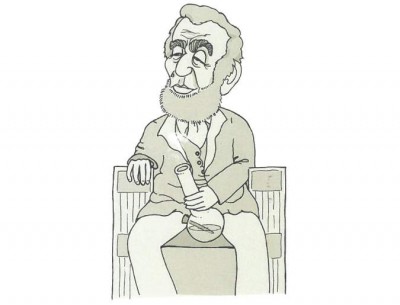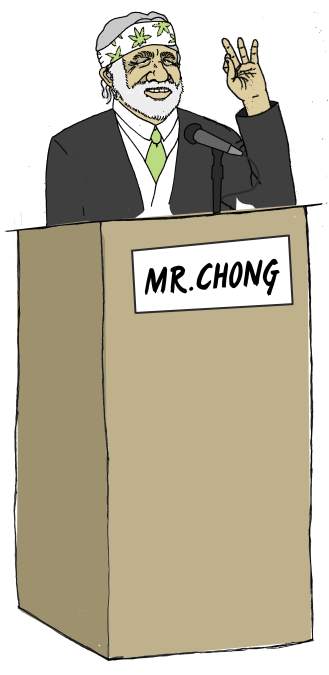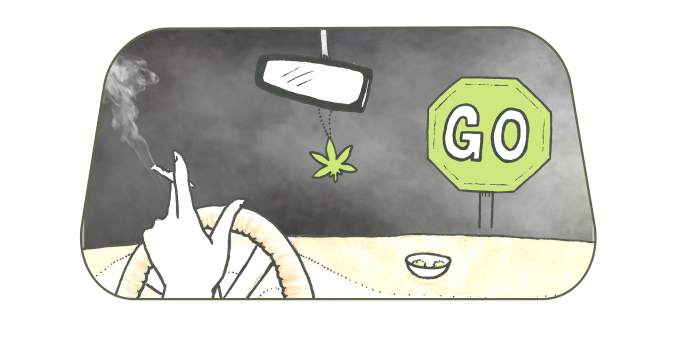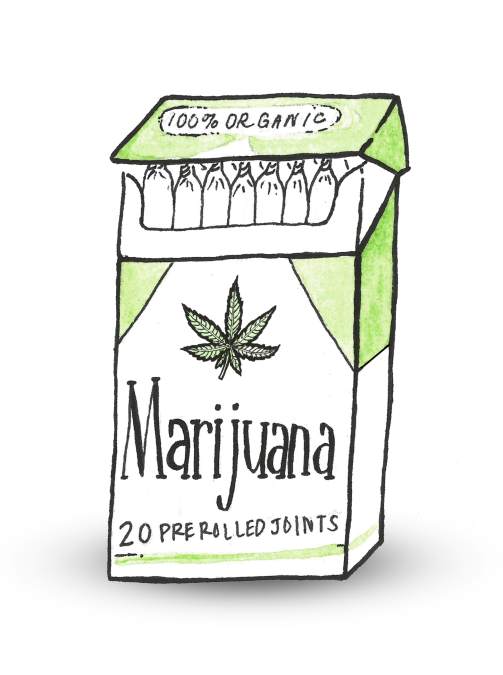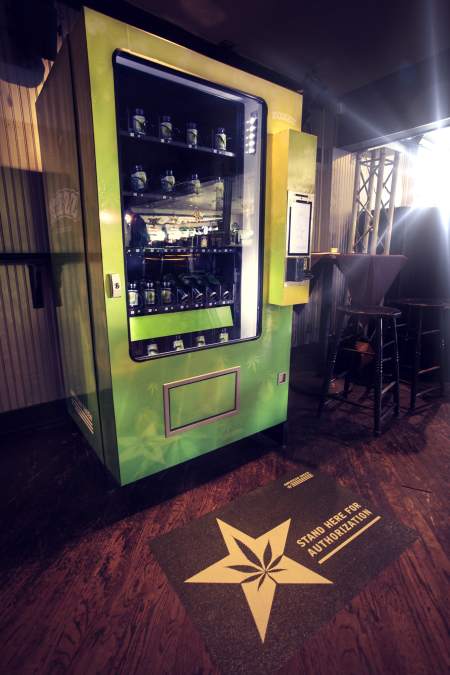Higher Ground: Weed in the Rose Garden
The legalization battle arrives at our nation’s capital.
Every single day there’s breaking news in the marijuana movement. Alaska officially legalized weed on February 24, making it the fourth state in the Union to toss aside the chains of prohibition, and the next day, at the stroke of midnight, our nation’s capital, Washington, D.C., followed suit. #CommanderInSpleef! 
But if ya think the “Just Say No” Nancy Reagan types are gently stepping aside, and the taxation and regulation of cannabis are going along swimmingly, you’ve been smoking too much of the recently legalized chronic.
In the District of Columbia, an hour before the city officially made recreational ganja legal, Republicans in the House of Representatives tossed a little fear-mongering into the mix.
“You can go to prison for this,” Rep. Jason Chaffetz (R-Utah) told The Washington Post—and the citizens of D.C. who overwhelmingly approved the initiative. ”We’re not playing a little game here.”
Reps. Chaffetz and Mark Meadows (R-N.C.) sent a memorandum to D.C. Mayor Muriel Bowser, threatening that if the city chose to move forward with pot in the District, “you will be doing so in knowing and willful violation of the law.” The right-wing reps were trying to nullify legalization—and the will of the people—through riders they’d previously attached to the unrelated trillion-dollar Congressional spending bill.
The letter went on to demand that Bowser create a list of all D.C. employees who participated in the enactment of the ballot measure, fork over their timecards, and share their salaries, apparently in an effort to create a sort of Green List. Joe McCarthy would be so proud.
Bowser’s no pushover (hell, in D.C., mayors often smoke crack just to deal with the toughness of their constituents); she let the world know she would do what more than 70 percent of her residents made clear they wanted when they passed the measure last summer. “My Administration is committed to upholding the will of DC voters,” she tweeted. “We will implement Initiative 71 in a thoughtful, responsible way.”
Police Chief Cathy Lanier is also on board, telling the American News Women’s Club, ”All those [marijuana]arrests do is make people hate us.” She added, “Marijuana smokers are not going to attack and kill a cop. They just want to get a bag of chips and relax. Alcohol is a much bigger problem.”
D.C.’s decriminalization law is a particularly big deal because of the massive racial biases behind marijuana arrests in the city. According to the Washington Lawyers’ Committee for Civil Rights and Urban Affairs, nine out of 10 people arrested for drug offenses in D.C. between 2009 and 2012 were black. And while blacks make up slightly more than half of the city’s population, surveys show they’re no more likely than whites to use marijuana. The craziest fact of all, according to The Washington Post: White folks are more likely than any other race to be selling drugs. Let’s just say it loud and clear: The War on Drugs is a war on black Americans.
Beyond that, the new D.C. law is largely symbolic, as sales of any kind are not allowed (which also means they won’t be collecting any of those sweet tax dollars). Individuals are allowed to possess and cultivate up to six plants, but only three can be budding in the government’s backyard at a time. District residents can’t fire up on federal land (yes, that means the Lincoln Memorial), in bars or restaurants, or in public housing. Medical marijuana is allowed (it was passed in D.C. in 2010), and if you’re feeling particularly generous, you can “gift” an ounce to friends, family, and fellow residents, so long as they’re over 21. (“Mr. Speaker, I hereby offer this peace-doobie to break the gridlock . . . ”)
The road to national legalization will be paved with setbacks, scare tactics, and a social conversation about what it means to be high. As with moonshine, civil rights, and same-sex marriage, we’ll have to tinker a bit to get it right. Nebraska and Oklahoma are taking Colorado to the U.S. Supreme Court, claiming legalization is causing massive drug-enforcement problems, with too many pickups full of Denver ganja entering their backyards. Last week all nine former DEA heads joined the brief. It points to red state/blue state differences, and serves as yet another reminder that, yes, marijuana is still illegal at the federal level.
But in a sign that we can all get along, a man walked into the Sixth District police station in D.C. last Monday and asked for his previously seized weed back. (He’d been arrested for a charge unrelated to drugs, and, along with a belt and a wallet, had his stash taken during processing.) As possession of two ounces or less is fully legal, an officer gave him his baggie of marijuana. Progress, apparently, comes in small doses.
This article first appeared in The Seattle Weekly.

